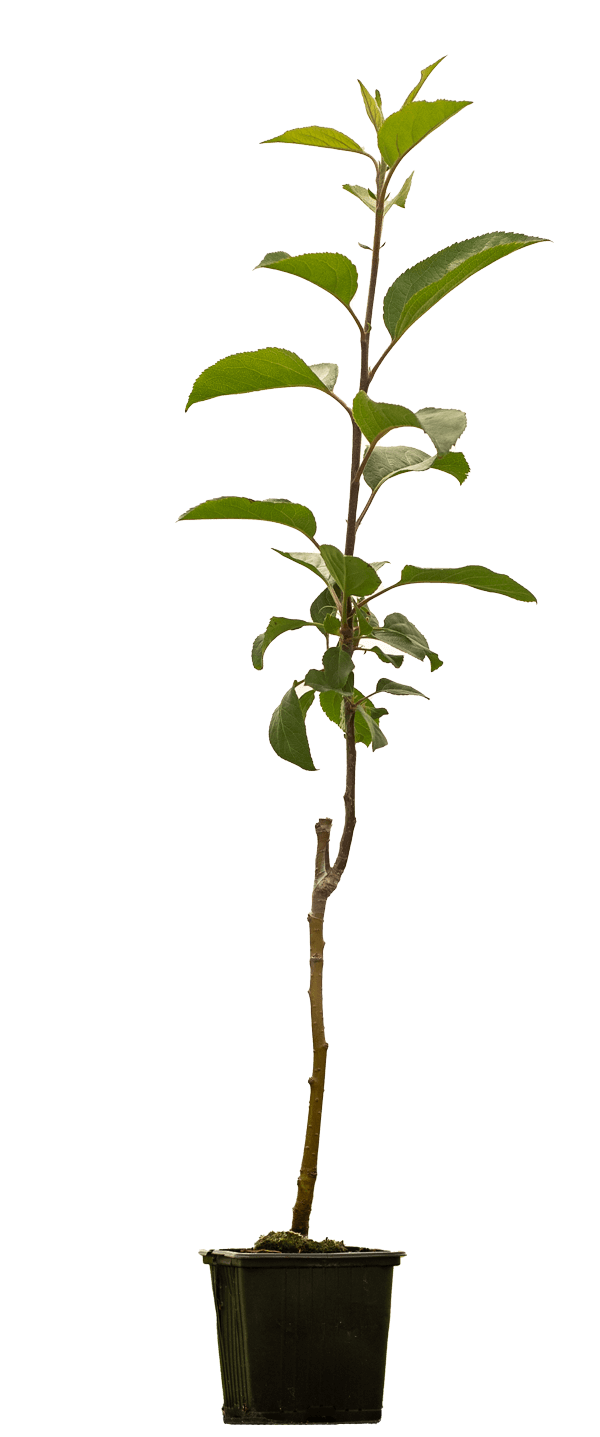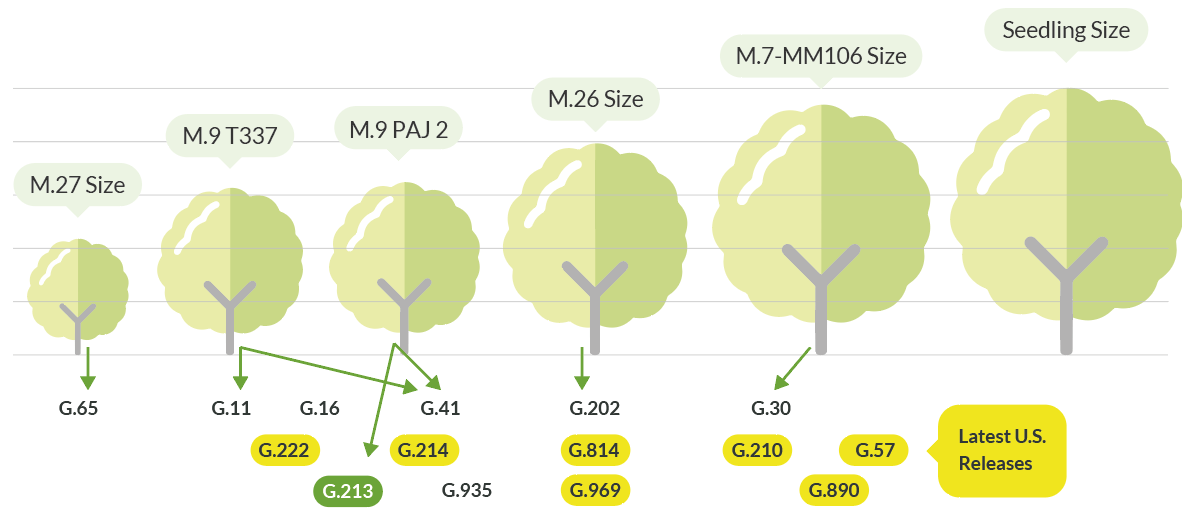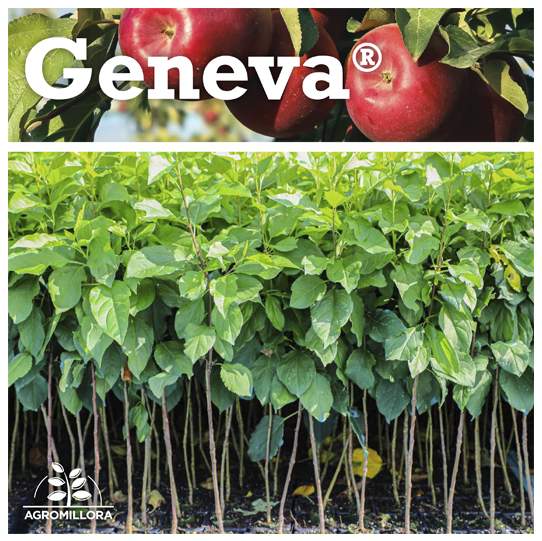Geneva 213
A new rootstock for a sustainable and efficient apple orchard
The Cornell University and the United States Department of Agriculture-Agricultural Research Service (USDA-ARS) together develop new rootstock cultivars with an emphasis on productivity, yield efficiency, easy nursery propagation, Fire blight, Woolly apple aphid and Crown rot resistances, tolerance to extreme temperatures, soil pathogens and apple replant disease. Among these, one of the new releases is the rootstock GENEVA®G.213
General information
Origin
(New York, USA) Plant Genetic Resources Unit, Cornell University (*): Protected rootstock. Plant Patent Application Publication, No. US 2017/0094854 P1 (March 30, 2017).

Agronomic Characteristics
Vigor
Similar to M.9 Pajam®2.
Yield
Branching
Reduces winter chilling requirements and induces an excellent branching. In stool beds produce some thorns.
Efficiency
Very high yield efficiency, 100-125% compared to M.9.
Tolerance
To waterlogging.
Resistances
Our catalogue
Tree vigor

Tree size affected by traditional and new rootstocks, including different releases from Plant Genetic Resources Unit, Cornell University, Geneva & USDA Agricultural Research Unit (New York-U.S.A.). Source: G. Fazio. Personal com., FEM (San Michele – Italy), September 2018.
Agronomical Performance
Different reports from Brazil in apple producing areas with limited availability of chilling hours, evidenced the good yield, high yield efficiency and precocity induced by G®213 on different apple cultivars.

Annual and cumulative yields of five years and differences on cumulative yield of the two rootstocks of ‘Maxi Gala’ and ‘Fuji Suprema’ cultivars grafted on G®G.213 and M.9 rootstocks and planted in 2015 in Vacaria, RS, Brazil.
How can we help you?
Fill the form and contact us
The data and results shown in these graphic resources are made for informative purposes only and it is not guaranteed to they will be achieved in all cases, due to several facts influencing plant growth such as climatic and geographical circumstances, soil characteristics, as well as use conditions and agricultural habits.

